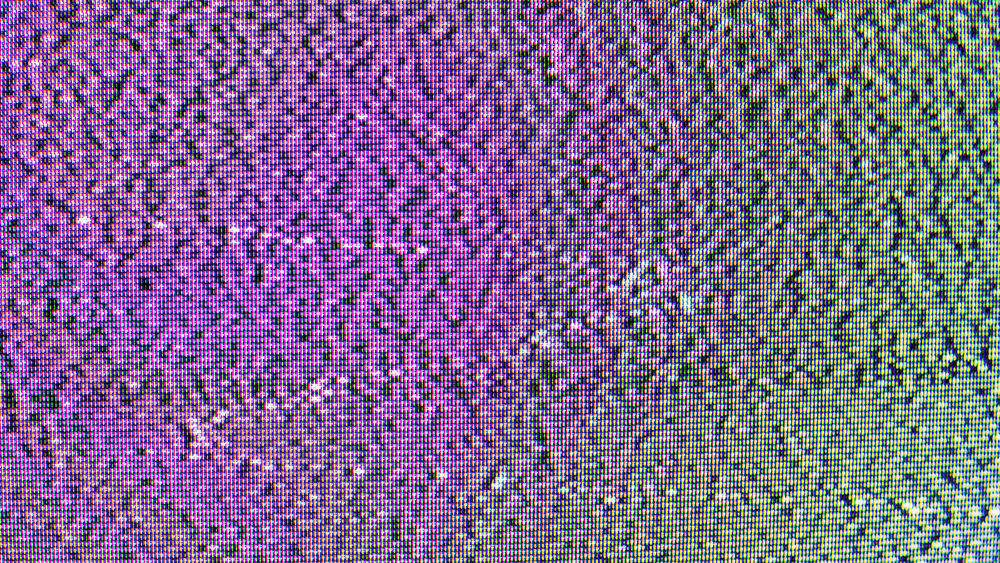Mix with Maury: How and Why Distortion Can Replace the Need for EQ & Compression

Get a sharp idea of what distortion can do for your mixes. (Image by Shutterstock)
As mixers, two of our main objectives are to achieve a balance in both the frequency response and the dynamic range. Many might assume that EQ and compression are the tools used to address these objectives.
You wouldn’t be wrong — they certainly can be. But the more I do this mixing thing (particularly in the rock/pop/electronic genres), the more I realize that the secret sauce is often tasteful use of distortion as a means to require less EQ and compression. I find that less EQ and less compression often yields a quicker result that feels much more natural. Why is this?
Dont Freq Out
Let’s talk about frequency response first. When starting a mix, one of the first things I hunt around for is resonance. Exaggerated resonances don’t really sound that great. They draw a lot of attention to themselves, they are grating on the ear, they feel a bit dizzying, and they are often the culprits of the dreaded critique that a mix is sounding “muddy” or “harsh.” “Muddy” being resonance found in the lows or low mids, and “harsh” being resonance found in the upper mids or highs.
Resonance can be anything from a peaky note on an electric guitar, to a woofy room node in a poorly recorded vocal, to the ringing on an idle rack tom, to a constant “whistle” in a synth patch. Quite simply, a resonance is a build-up of frequencies very close together. It’s a naturally occurring thing in music, but as mixers we need to pay close attention to them when they are too pronounced.
So, why don’t we like these intense resonances? It just so happens that the human ear and brain much prefer to hear an even distribution of a wide variety of frequencies instead. We like notes presented with a slew of harmonics: harmonious frequencies above and below the fundamental that enrich the sound.
Clearly Distorted
This is exactly what distortion does. It squishes sound in way that causes it to burst out newly audible harmonics. Start thinking about distortion as a tool for “sanding” down tracks so they have a more even frequency response. The part you shave off the top leaves little piles of harmonics on either side. Music dust! A lot of engineers use lingo like “cooking” a track with distortion. So you could also think of it like baking… heat infuses the dish, causing it to bloom and take on a new character. Flavors and aromas that were there to begin with are enhanced and exaggerated.
You introduce more musical signal. Who wouldn’t want more music in their music?! Resonances tend to become less pronounced as you get a track vibing with some saturation, reducing the need to reach for EQ.
Distortions also conveniently reduce dynamic range — the loudest moments of the signal are lopped off. Flatlined at the peaks. By shaving away the transient (or however much you take off the top), we bring up the perceived level of the quieter details in the sound, making it feel more dense. It’s much like compression, but without the headache of four interactive, sensitive parameters (threshold, ratio, attack, and release). The beauty of distortion is that you can very easily get a signal to sound louder while peaking lower on the meter. And if you do it right, you can maintain the original signal’s integrity without it really sounding much different at all.
It’s a subject reiterated quite a bit these days, but we must remember that our favorite classic recordings from the ‘60s and ‘70s were recorded and mixed through about a dozen stages of mechanically and electronically inefficient tools (compared to digital), accumulating distortion and decreased dynamic range every step of the way.
Today, a lot of us work in conditions where it’s so easy to bypass these tasteful distortions. Learn to embrace distortion. A condenser mic into a clean pre on a digital interface will rarely yield a vibey record! Somewhere along the way you’re gonna have to beat it up to get it to fit in the tiny box that is a master recording.
Andrew Maury is a producer/mixer based in Brooklyn, New York. Andrew immersed himself in the professional audio community and quickly garnered a reputation remixing as a member of the highly esteemed RAC (rac.fm) while, in parallel, touring the United States mixing front of house live sound for bands such as Ra Ra Riot, Givers, and Delicate Steve. Andrew’s first studio credit was assisting producer and Death Cab For Cutie guitarist Chris Walla on Tegan & Sara’s 2009 release, Sainthood. Andrew later co-produced and engineered Ra Ra Riot’s sophomore album, The Orchard, and has since worked on dozens of records for both indie and major label artists such as RAC, Panama Wedding, Milagres, Penguin Prison, Holychild, Kisses, and Superhumanoids.
Andrew will be working the remainder of 2014 producing/mixing forthcoming records for Panama Wedding, High Highs, Cruiser, and Strange Names.
Please note: When you buy products through links on this page, we may earn an affiliate commission.








rodri
August 7, 2014 at 10:56 pm (11 years ago)It will be nice if you put a technic thats has help you achieving this.
Johnny
August 25, 2014 at 7:52 pm (11 years ago)Awesome!